Key Takeaways
- Herpes zoster results from the reactivation of the chickenpox virus later in life.
- Early recognition and prompt antiviral treatment can ease symptoms and prevent complications.
- Vaccination and good immune health greatly reduce the risk of developing shingles.
Herpes zoster, often called shingles, can catch you off guard with sudden pain and a rash that seems to appear out of nowhere. It happens when the same virus that causes chickenpox reawakens years later, affecting your nerves and skin. Herpes zoster is a viral infection that causes a painful, blistering rash and nerve pain, most often on one side of your body.
You might first notice tingling, itching, or burning before the rash appears. These early warning signs can be easy to overlook, but recognizing them helps you act quickly. Starting antiviral treatment early can shorten the illness and reduce complications, including long-term nerve pain.
Understanding what triggers herpes zoster and how to manage it puts you in control of your health. Knowing the symptoms, causes, and treatment options helps you make informed decisions and seek care before the infection worsens.
Contents
1. Understanding Herpes Zoster
- Definition and Key Facts
- The Link to Chickenpox (How the Virus Reactivates)
- Epidemiology and Incidence
2. Symptoms and Clinical Presentation
- Early Signs and Prodromal Symptoms
- Rash and Skin Manifestations
- Dermatomal Distribution
- Special Forms: Ophthalmic and Auricular Shingles
- Role of Varicella-Zoster Virus
- Immunity and Reactivation
- Age and Immunocompromised States
- Other Contributing Factors
4. Diagnosis and Differential Considerations

Vaccination Program
Explore our range of vaccination programs designed for your specific health needs.
Understanding Herpes Zoster
You may know herpes zoster by its common name, shingles. It results from the reactivation of a virus that has remained dormant in your body for years. Understanding how this condition develops, who it affects most, and what patterns it follows can help you recognize and manage it effectively.
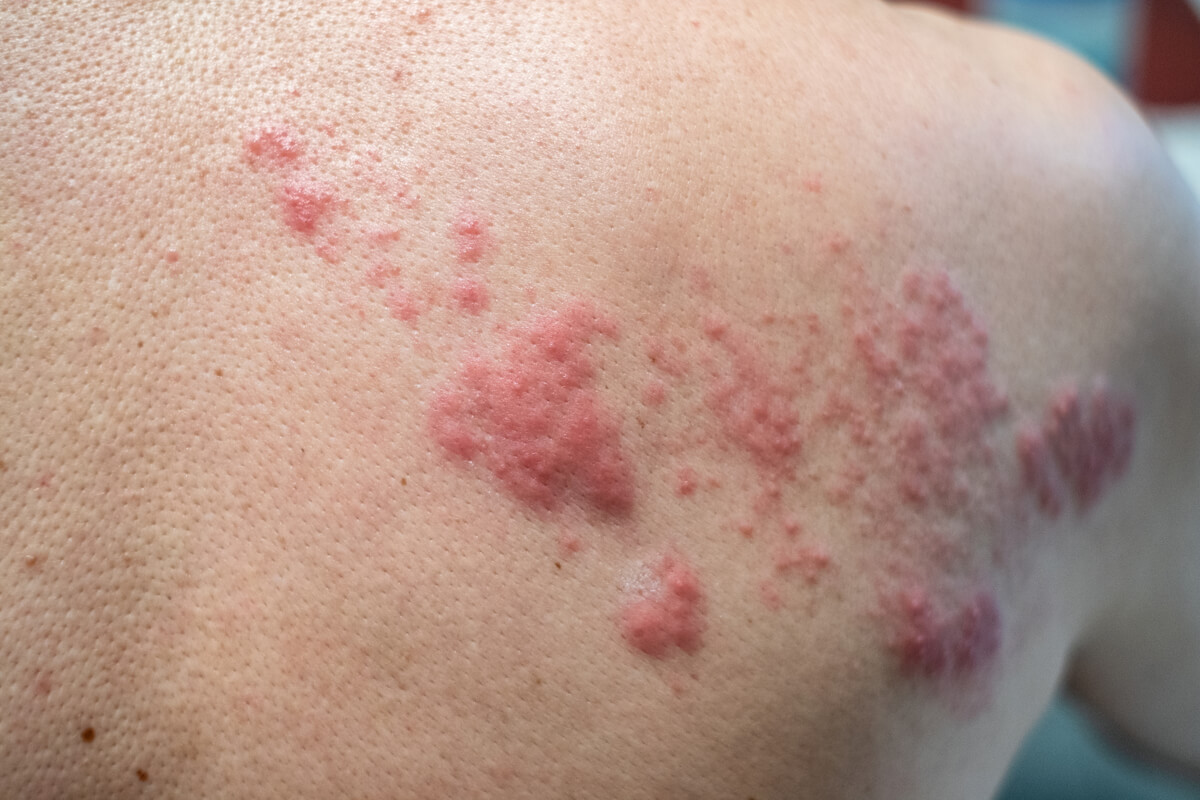
Definition and Key Facts
Herpes zoster (also called shingles or zona) is a viral infection caused by the varicella-zoster virus (VZV). This is the same virus responsible for chickenpox. After you recover from chickenpox, the virus stays inactive in nerve tissue near your spinal cord and brain.
When the virus reactivates, it causes a painful, blistering rash that usually appears on one side of your body or face. The rash often forms a stripe or band that follows the path of a single nerve.
Key facts about herpes zoster include:
- It is not contagious, but the virus can spread to someone who has never had chickenpox, causing chickenpox, not shingles.
- The condition is more common in adults over 50 and in people with weakened immune systems.
- Antiviral treatment can shorten the illness and lower the risk of complications if started early.
Symptoms may include tingling, burning, or pain before the rash appears, followed by clusters of fluid-filled blisters that crust over within days.
The Link to Chickenpox (How the Virus Reactivates)
After you recover from chickenpox, the varicella-zoster virus does not leave your body. It becomes latent, hiding in nerve cells (dorsal root ganglia). Years or decades later, it can reactivate as herpes zoster when your immune system weakens or becomes stressed.
Reactivation may occur due to aging, illness, or medications that suppress your immune response. The virus travels along the affected nerve to your skin, producing inflammation and the characteristic rash.
You cannot catch shingles from another person. However, contact with fluid from shingles blisters can transmit the virus to someone who has never had chickenpox or the vaccine, leading them to develop chickenpox instead.
Epidemiology and Incidence
Herpes zoster affects millions of people worldwide each year. The incidence increases sharply after age 50, with older adults facing the highest risk. Studies estimate that about one in three people will develop shingles during their lifetime.
The condition occurs across all regions and populations, but immunocompromised individuals—such as those with cancer, HIV, or organ transplants—experience higher rates and more severe disease.
In countries where chickenpox vaccination is routine, the herpes zoster incidence among younger adults has declined. However, the aging population continues to drive overall case numbers upward. Vaccination against shingles remains the most effective way to reduce your risk and prevent long-term nerve pain, known as postherpetic neuralgia.
Symptoms and Clinical Presentation
You may first notice localized pain or tingling before any visible rash appears. The condition usually affects one side of the body in a band-like pattern and can involve sensitive areas such as the eyes or ears, depending on which nerves are reactivated.
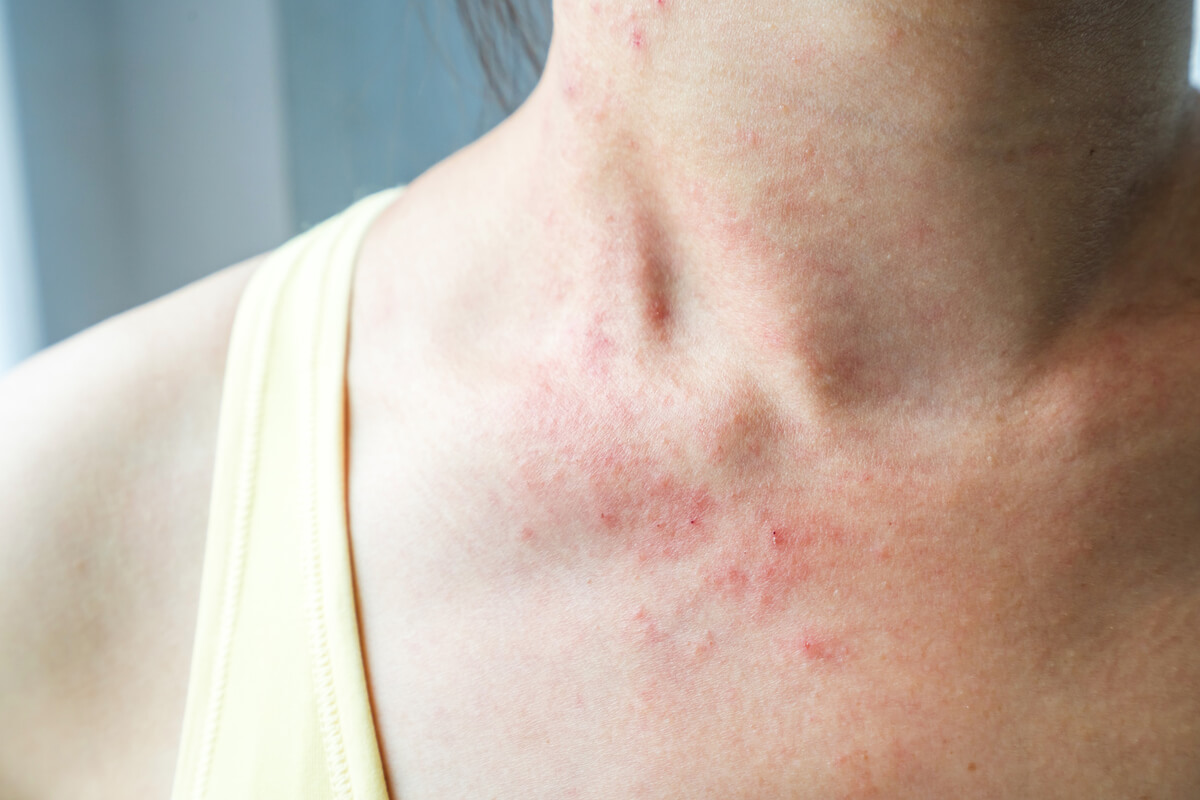
Early Signs and Prodromal Symptoms
In the early phase, you might feel pain, itching, or tingling in the skin before any rash develops. This stage, known as the prodrome, can last from one to ten days. The discomfort often feels like a burning or stabbing sensation along a specific nerve pathway.
Some people experience headache, low-grade fever, or fatigue during this period. The pain may mimic other conditions such as toothache, pleurisy, or appendicitis, which can delay diagnosis. Recognizing this early pattern is important because antiviral treatment works best when started soon after symptoms begin.
Older adults often report stronger pain before the rash, and this may predict a higher risk of postherpetic neuralgia later on.
Rash and Skin Manifestations
The rash usually begins as red patches that quickly form small, fluid-filled vesicles. These blisters appear in clusters on an erythematous base, often described as herpetiform. Within a few days, the vesicles cloud, rupture, and crust over.
| Stage: Erythema | |
|---|---|
| Description | Redness and mild swelling |
| Duration (approx.) | 1–2 days |
| Stage: Vesicular | |
|---|---|
| Description | Clear fluid blisters |
| Duration (approx.) | 3–5 days |
| Stage: Crusting | |
|---|---|
| Description | Scabs form as lesions dry |
| Duration (approx.) | 7–10 days |
The eruption typically heals within 2–4 weeks, though the skin may remain tender. In some cases, scarring or pigment changes occur, especially if lesions become secondarily infected or scratched.
Dermatomal Distribution
Herpes zoster follows the path of a single sensory nerve (dermatome). This produces a rash on one side of the body that rarely crosses the midline. The thorax is the most common site, followed by the face, neck, and lower back.
You might notice pain and rash wrapping around one side of your chest like a stripe. This pattern helps doctors distinguish shingles from other skin conditions. In people with weakened immunity, multiple dermatomes or both sides of the body can be affected, a form known as zoster multiplex.
Occasionally, nerve pain occurs without a rash, called zoster sine herpete, making diagnosis more challenging.
Special Forms: Ophthalmic and Auricular Shingles
When the trigeminal nerve is involved, the infection may affect your eyes (zona ophtalmique) or ears. Herpes zoster ophthalmicus can cause redness, swelling, and blisters on the forehead, eyelid, or tip of the nose. Eye involvement may lead to keratitis, uveitis, or glaucoma, requiring urgent ophthalmologic care.
In the ear region, herpes zoster oticus (Ramsay Hunt syndrome) can produce ear pain, vesicles in the ear canal, and sometimes facial weakness. You might also notice hearing loss or dizziness if the infection affects the auditory or vestibular nerves.
Both forms demand prompt antiviral treatment and medical evaluation to prevent lasting complications involving vision or hearing.
Causes and Risk Factors
Herpes zoster develops when the varicella-zoster virus (VZV)—the same virus that causes chickenpox—reactivates after lying dormant in your nerve tissue. The likelihood of this reactivation increases when your immune system weakens, whether from age, illness, or certain treatments. Other influences, such as stress or physical trauma, can also play a role in triggering the disease.

Role of Varicella-Zoster Virus
After you recover from varicella (chickenpox), the VZV remains inactive in your dorsal root ganglia, a cluster of nerve cells near the spinal cord. The virus can stay silent for decades without causing symptoms.
Reactivation occurs when the balance between the virus and your immune defenses changes. The virus then travels along sensory nerves to the skin, causing the painful rash known as shingles.
VZV belongs to the herpesvirus family, which includes herpes simplex viruses. Unlike herpes simplex, which causes recurrent cold sores or genital lesions, VZV reactivation usually happens only once in a lifetime.
Although the virus itself is not newly acquired during shingles, you can transmit VZV to someone who has never had chickenpox, potentially causing them to develop varicella rather than shingles.
Immunity and Reactivation
Your immune system plays a central role in keeping VZV dormant. A decline in cell-mediated immunity, which involves T cells that recognize and control viral infections, increases your risk of reactivation.
Conditions that weaken immunity include HIV/AIDS, cancer treatments like chemotherapy, and organ transplantation, which requires immunosuppressive medication. People receiving long-term corticosteroids or biologic therapies for autoimmune diseases also face higher risk.
Emotional or physical stress can further suppress immune responses, though its effect is smaller compared to medical immunosuppression. Even short-term immune changes, such as those following severe illness, may allow VZV to reactivate.
Maintaining immune health through balanced nutrition, adequate sleep, and vaccination helps reduce your risk of shingles.
Age and Immunocompromised States
Older adults are the most affected group. The risk of herpes zoster rises sharply after age 50 because T-cell function naturally declines with age. This process, called immunosenescence, limits your ability to suppress latent viruses.
People with leukemia, lymphoma, or advanced HIV infection are also at high risk due to reduced immune surveillance. Those undergoing transplantation or receiving chemotherapy experience similar vulnerability.
| Group: Adults over 60 years | |
|---|---|
| Relative Risk of Herpes Zoster* | 1.5–2 times higher |
| Group: HIV/AIDS patients | |
|---|---|
| Relative Risk of Herpes Zoster* | ~3 times higher |
| Group: Cancer (lymphoma, leukemia) | |
|---|---|
| Relative Risk of Herpes Zoster* | 2–2.5 times higher |
*Approximate values based on meta-analyses of population studies.
Vaccination is recommended for adults over 50 and for immunocompromised individuals when medically appropriate.
Other Contributing Factors
Several additional elements can influence your likelihood of developing shingles. A family history of herpes zoster may indicate genetic factors affecting immune control of VZV.
Physical trauma near a nerve root can sometimes trigger reactivation, possibly by disrupting nerve tissue that harbors the virus. Psychological stress, though less potent, can alter immune signaling and increase susceptibility.
Chronic diseases such as diabetes, renal disease, and autoimmune disorders also modestly raise risk. Women appear slightly more affected than men, while people of Black race have shown lower rates in some studies.
You cannot fully eliminate these risks, but understanding them helps you and your healthcare provider decide on preventive measures, including vaccination and timely medical evaluation.
Diagnosis and Differential Considerations
Accurate diagnosis depends on identifying the characteristic rash pattern and confirming the presence of varicella-zoster virus (VZV) when needed. Laboratory testing supports diagnosis in atypical or rash-free cases, while careful comparison with similar skin disorders helps prevent misdiagnosis.
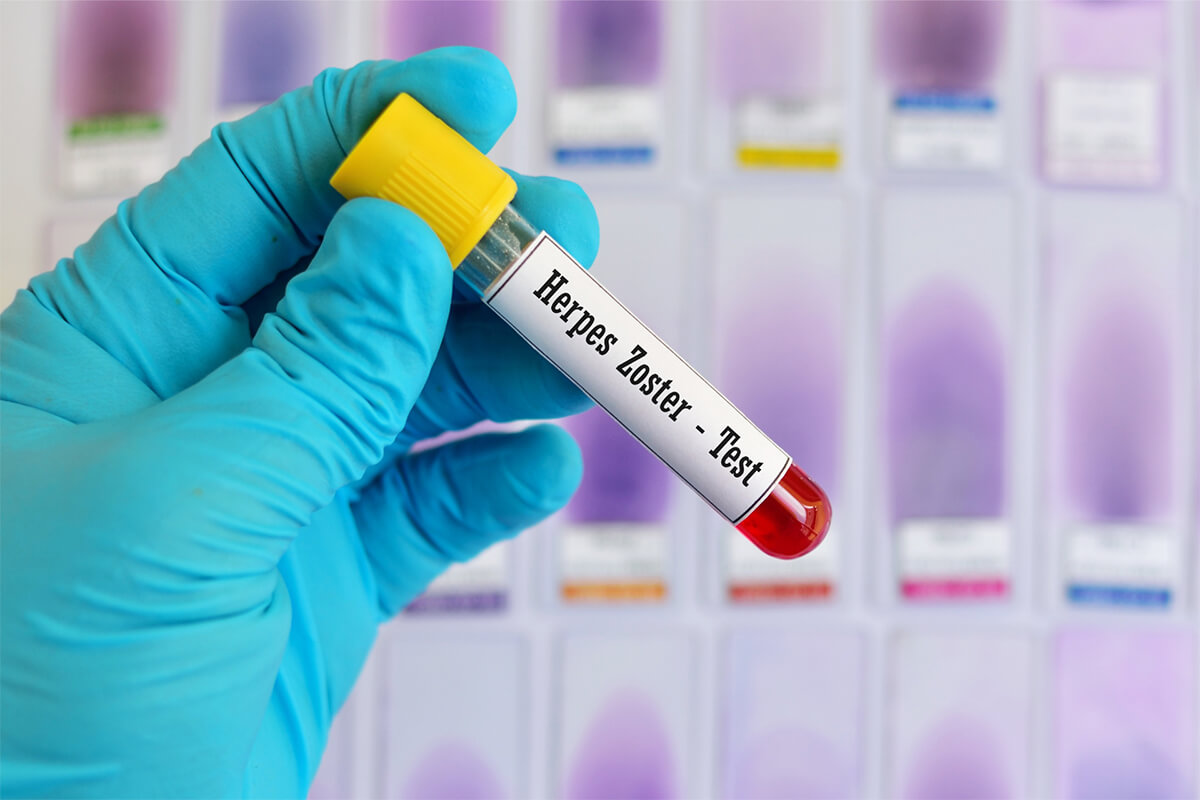
Clinical Assessment
You can often recognize herpes zoster through its unilateral, dermatomal vesicular rash and preceding localized pain or burning. The lesions usually appear in clusters on one side of the body and do not cross the midline.
Early in the illness, you may notice pain before any visible rash. This prodromal phase can last several days and may mimic other causes of neuropathic pain. The rash typically evolves from erythematous macules to vesicles and crusts within a week.
A focused history should include prior varicella infection, immune status, and recent immunosuppressive therapy. In immunocompromised individuals or those with atypical presentations, further testing becomes essential.
Laboratory and PCR Testing
When the clinical picture is unclear, laboratory confirmation helps ensure accuracy. Polymerase chain reaction (PCR) testing is the most sensitive and specific method for detecting VZV DNA in lesion fluid, crusts, or cerebrospinal fluid.
You may also encounter direct fluorescent antibody (DFA) testing or viral culture, though these methods are less sensitive and take longer to yield results. PCR is especially useful in diagnosing zoster sine herpete, where pain occurs without a rash.
In suspected neurological or ocular involvement, PCR analysis of cerebrospinal fluid or ocular samples can confirm viral presence. Serologic testing is less practical for acute diagnosis but may demonstrate prior exposure to VZV.
| Test Type: PCR | |
|---|---|
| Sample | Vesicle fluid, CSF |
| Diagnostic Use | Detects VZV DNA |
| Notes | High sensitivity |
| Test Type: DFA | |
|---|---|
| Sample | Lesion scraping |
| Diagnostic Use | Differentiates HSV vs VZV |
| Notes | Rapid but less sensitive |
| Test Type: Culture | |
|---|---|
| Sample | Vesicle fluid |
| Diagnostic Use | Confirms active virus |
| Notes | Slow turnaround |
Distinguishing From Other Conditions
You may need to distinguish herpes zoster from other vesicular or painful skin disorders. Herpes simplex virus (HSV) infections can appear similar but usually recur in the same location and lack a dermatomal pattern.
Other possible mimics include impetigo, contact dermatitis, folliculitis, insect bites, and drug eruptions. These conditions differ in lesion distribution, systemic symptoms, or response to antiviral therapy.
In the absence of a rash, consider zoster sine herpete, which requires laboratory confirmation. A careful review of symptom onset, lesion characteristics, and patient history helps you narrow the diagnosis and begin appropriate treatment promptly.
Treatment and Symptom Management
Prompt medical treatment can shorten the duration of herpes zoster and reduce the risk of long-term nerve pain. Managing symptoms focuses on antiviral therapy, pain control, and supportive measures that help your skin and nerves recover.
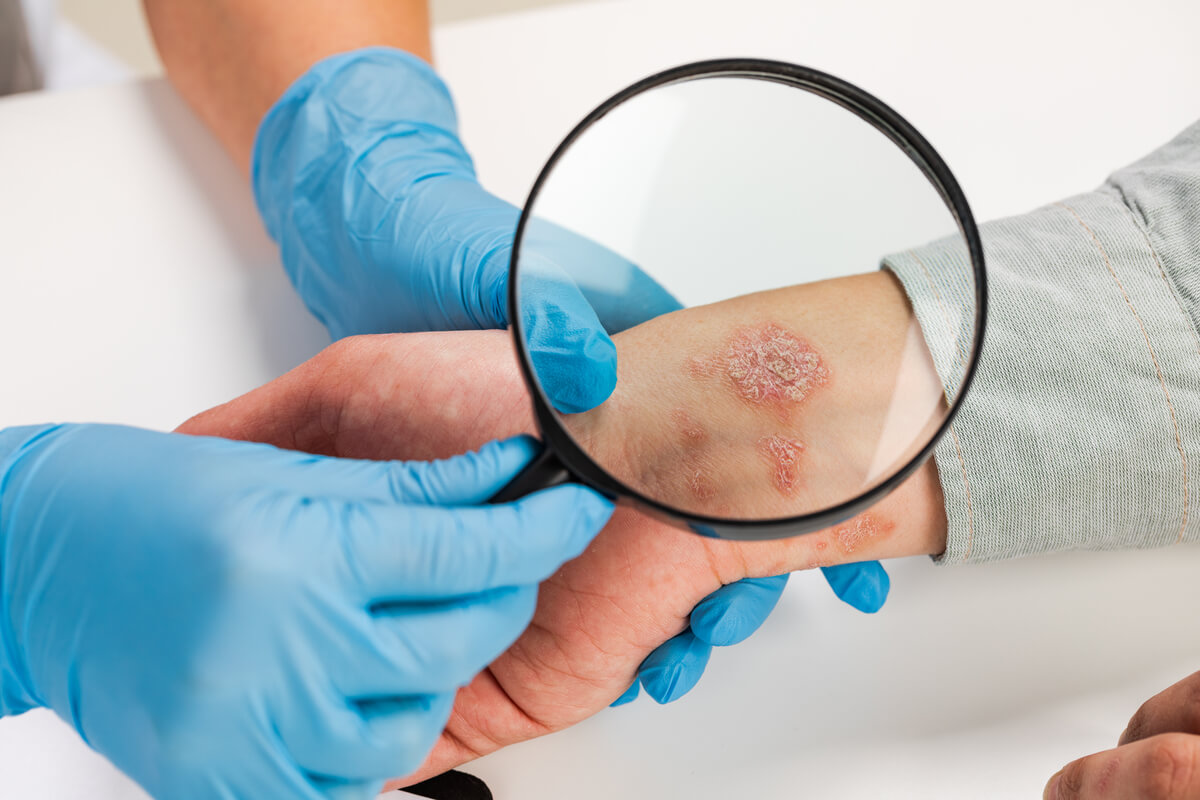
Antiviral Medications
Antiviral drugs help limit viral replication and speed up healing when started early—preferably within 72 hours of rash onset. Commonly prescribed options include acyclovir (aciclovir), valacyclovir (valaciclovir), and famciclovir. These medications reduce the severity and duration of the rash and may lower the risk of postherpetic neuralgia.
Typical oral regimens last about 7 days. In severe or disseminated cases, intravenous acyclovir may be necessary. Brivudine is another option used in some countries, particularly for adults at higher risk of complications.
You should maintain good hydration during antiviral therapy. These drugs work best when taken consistently at evenly spaced intervals.
Pain Relief and Neuropathic Pain Management
Pain from herpes zoster can range from mild discomfort to severe burning or stabbing sensations. For mild pain, paracetamol (acetaminophen) or nonsteroidal anti-inflammatory drugs (NSAIDs) can help.
If nerve pain persists, your doctor may prescribe medications such as gabapentin, amitriptyline, or other agents used for neuropathic pain. Topical treatments like lidocaine patches or capsaicin cream can provide localized relief.
In some cases, short courses of corticosteroids (corticoïdes) may be added to reduce inflammation and swelling, though they are not a substitute for antivirals. Pain management often requires a combination of approaches tailored to your tolerance and symptom severity.
Supportive Care and Home Remedies
Keeping the affected skin clean and dry helps prevent secondary infection. You can use cool compresses or calamine lotion to soothe itching and irritation.
Loose clothing reduces friction on the rash. Avoid scratching or picking at blisters to minimize scarring. Rest supports your immune response, and balanced nutrition aids recovery.
For comfort, you may apply a sterile, non-stick dressing if blisters weep. Avoid contact with people who have never had chickenpox or the varicella vaccine, as the virus can spread through direct contact with the rash.
Complications, Prevention, and Public Health
Herpes zoster can lead to lasting nerve pain, eye damage, and other serious outcomes, especially in older adults and those with weakened immune systems. Vaccination plays a central role in reducing these risks and limiting the disease’s burden on individuals and healthcare systems.
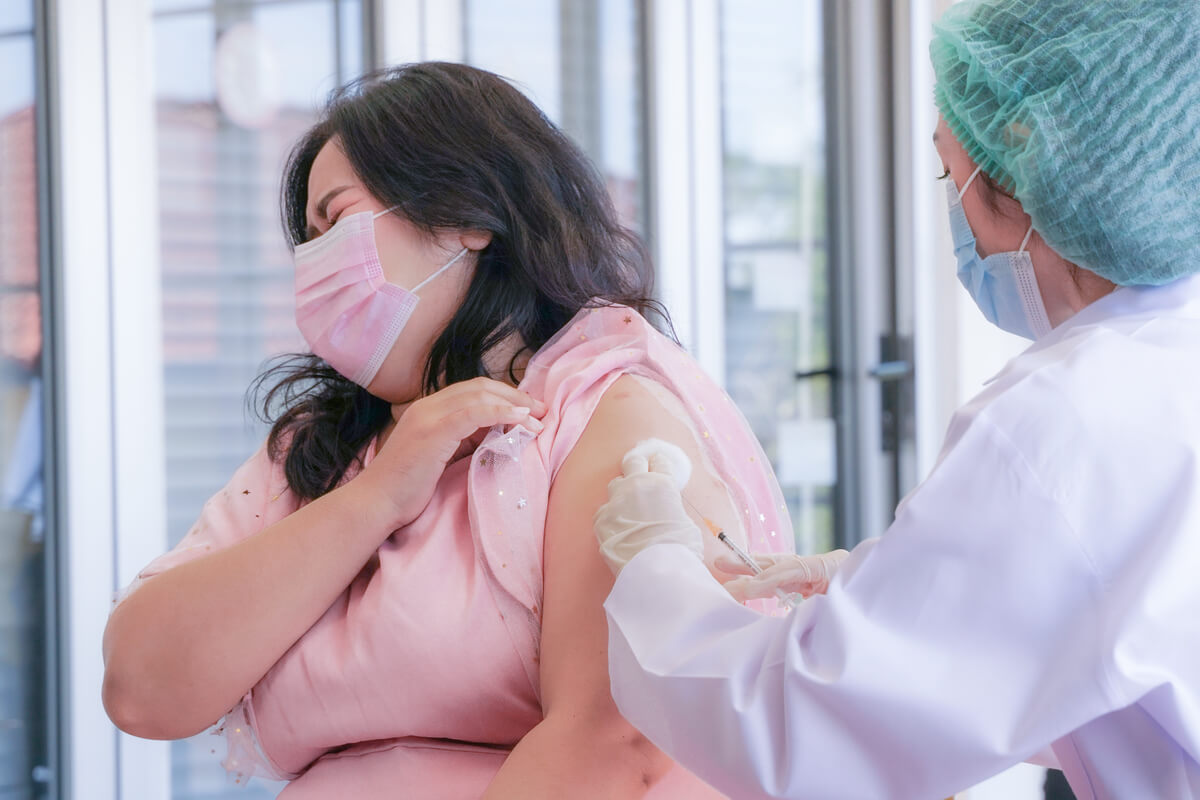
Postherpetic Neuralgia and Other Complications
The most frequent long-term complication is postherpetic neuralgia (PHN), or névralgie post-herpétique. This condition causes persistent nerve pain in the area where the shingles rash appeared, sometimes lasting months or years.
You may experience burning, stabbing, or throbbing pain that interferes with sleep and daily activities. The risk of PHN increases with age and delayed antiviral treatment.
Other complications can involve the eyes, leading to cécité (vision loss) if the infection affects the ophthalmic branch of the trigeminal nerve. Pneumonia, encephalitis, and bacterial skin infections are less common but can occur, particularly in immunocompromised individuals.
| Complication: Postherpetic neuralgia | |
|---|---|
| Possible Outcome | Chronic nerve pain |
| Higher Risk Groups | Adults over 50 |
| Complication: Ophthalmic zoster | |
|---|---|
| Possible Outcome | Vision damage or loss |
| Higher Risk Groups | All ages |
| Complication: Pneumonia / Encephalitis | |
|---|---|
| Possible Outcome | Respiratory or neurological illness |
| Higher Risk Groups | Immunocompromised |
Vaccination and Prevention Strategies
Vaccination remains the most effective way to prevent shingles and its complications. The recombinant zoster vaccine (RZV), marketed as Shingrix, is recommended for adults aged 50 years and older, even if you have had shingles before.
The vaccine is given in two doses, at least two months apart. It provides strong protection against both shingles and postherpetic neuralgia. You should complete the full series to ensure lasting immunity.
If you never had chickenpox or the varicella vaccination, you can still benefit from immunization. The varicella vaccine reduces the likelihood of the virus reactivating later in life. Keeping your immune system healthy through balanced nutrition, stress control, and medical care also lowers your risk.
Public Health Impact and Education
Herpes zoster presents a growing public health concern as populations age. The disease causes significant healthcare costs and loss of quality of life due to chronic pain and complications.
National immunization programs that include the recombinant zoster vaccine can reduce hospitalizations and long-term disability. The World Health Organization (WHO) encourages countries to evaluate cost-effectiveness when introducing the vaccine into public schedules.
Public education helps you recognize early symptoms—such as tingling or localized pain—so you can seek antiviral treatment promptly. Awareness campaigns also emphasize that shingles is not contagious in itself, but the virus can cause chickenpox in those who have never been infected or vaccinated.

Vaccination Program
Explore our range of vaccination programs designed for your specific health needs.

